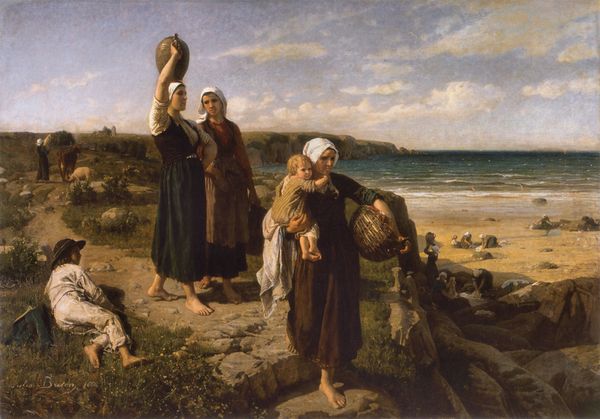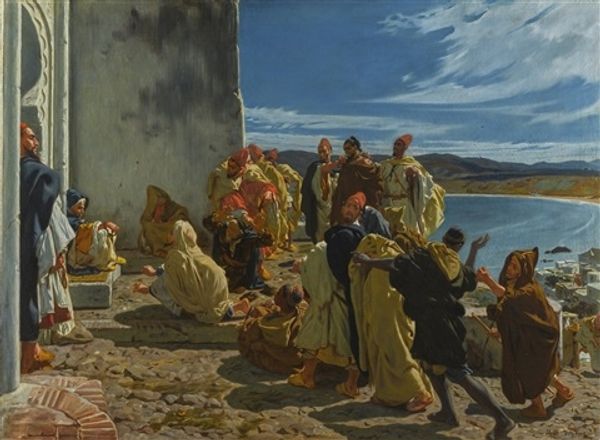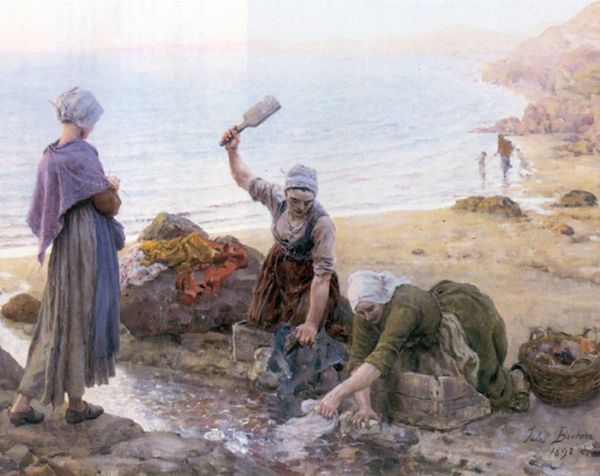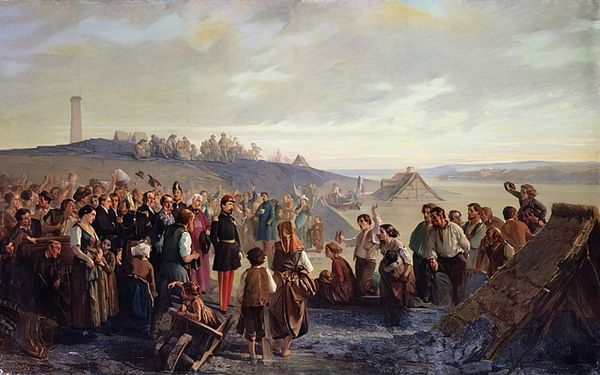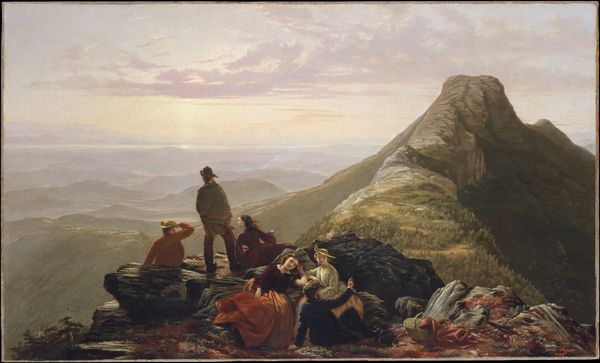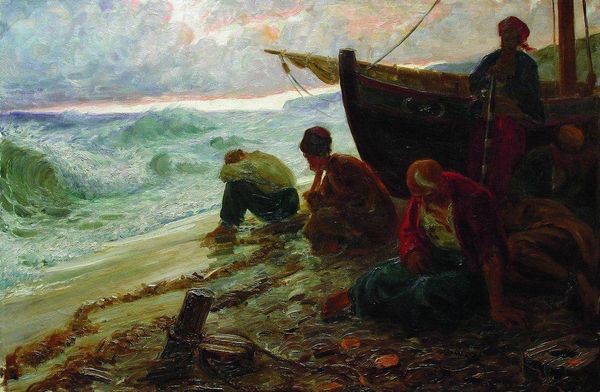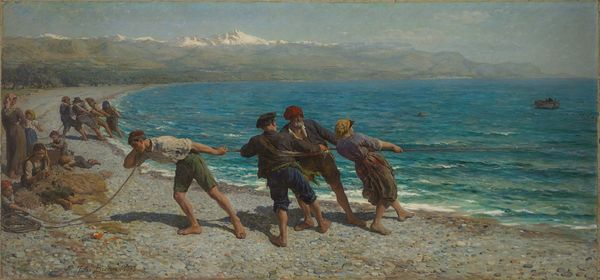
Copyright: Public domain
Jules Breton painted these washerwomen of the Breton coast using oil paints and brushes. What's striking is how Breton uses the traditional medium of oil paint to depict a scene of working-class women engaged in a laborious task, washing laundry by hand. The texture of the paint, applied in visible strokes, mimics the rough feel of the textiles being scrubbed. The figures themselves are rendered with a certain monumentality, their forms solid and weighty, emphasizing their physical exertion. Breton romanticizes their work, yet the painting also hints at the social realities of the time. Laundry work was a back-breaking job, typically performed by women from the lower classes. The painting underscores the amount of effort involved in textile maintenance before industrialization. Looking closely, we can appreciate how Breton elevates this everyday activity through the careful application of paint, blurring the lines between fine art and the representation of manual labor. It prompts us to consider the social context in which art is made, and whose stories are deemed worthy of depiction.
Comments
No comments
Be the first to comment and join the conversation on the ultimate creative platform.
